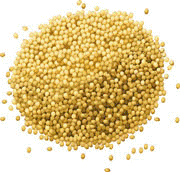International Sorghum and Millet Collaborative Research Support Program (INTSORMIL CRSP)
Date of this Version
9-1-2006
Document Type
Article
Citation
INTSORMIL Report No. 5, September 1, 2006
Abstract
Grain sorghum is generating new excitement on the health food scene. Why? For one reason, flour milled from grain sorghum has NO GLUTEN! That’s important to those people with an intolerance to gluten-containing products (Celiac disease). Sorghum is high in antioxidants (cancer prevention) and insoluble fiber (slowly digested), with relatively small amounts of soluble fiber. The protein and starch in sorghum endosperm are more slowly digested than other cereals. The slower rate of digestibility of sorghum products may be beneficial to diabetics.
So how is sorghum flour used in baking? It can be substituted for wheat, rice or soybean flour in a wide variety of baked goods. Its bland flavor and light color does not alter the taste of finished products.
The value of sorghum flour in baking has been known for many years in El Salvador. In fact, Clemencia Barrera (in photo below) is one of about 150 small village bakers in El Salvador who uses sorghum flour as a substitute for wheat flour. According to Clemencia, “I use sorghum flour as a substitute for wheat in my bakery because it increases my profit.” Clemencia’s profits are about US$ 40 per week which is good in El Salvador villages. In addition, sorghum flour is versatile and can be used for a wide range of baked products, is nutritional and has excellent physical qualities. It is also about 24% cheaper and the price is more stable than wheat flour. But most importantly, it is a 100% salvadoreña product, thus minimizing the need for wheat which is not locally grown and must be imported.

